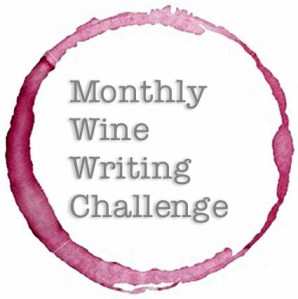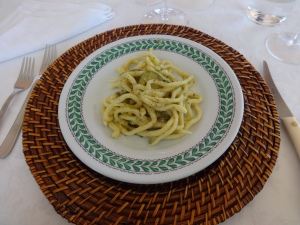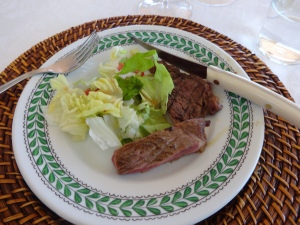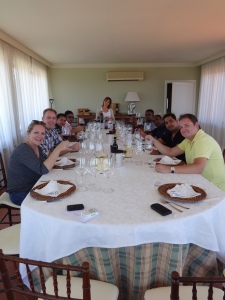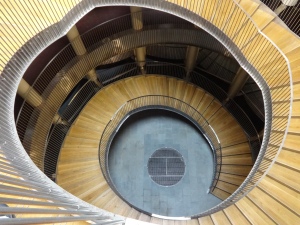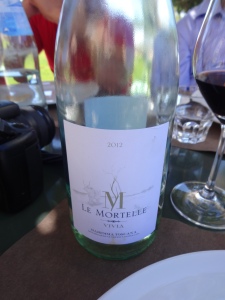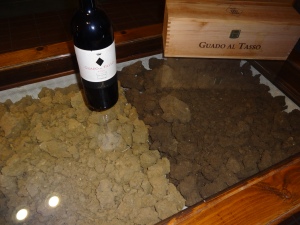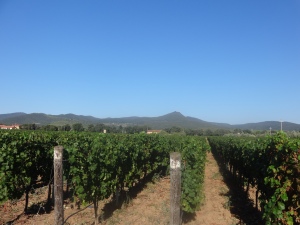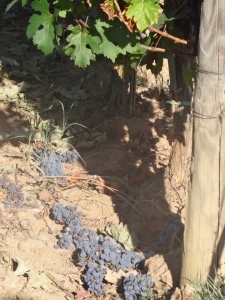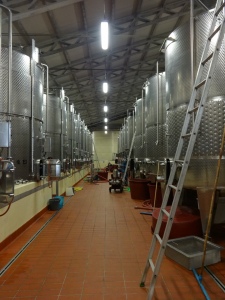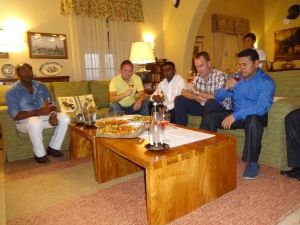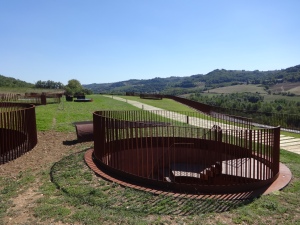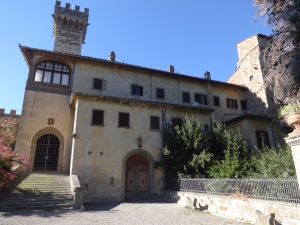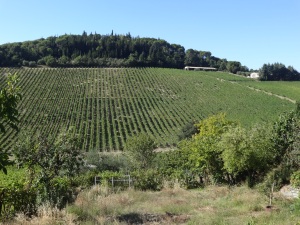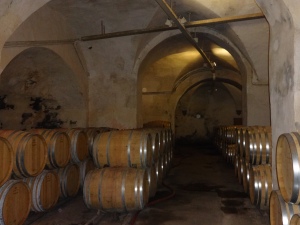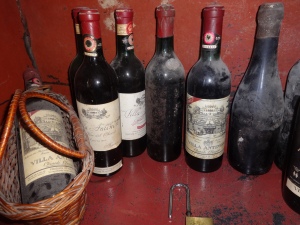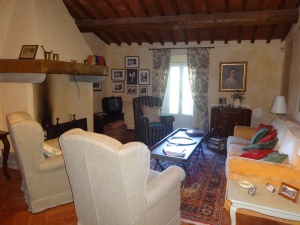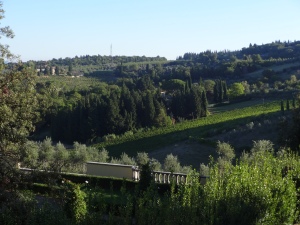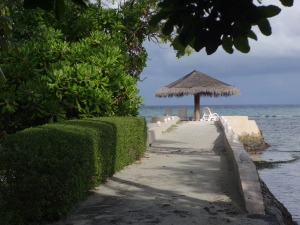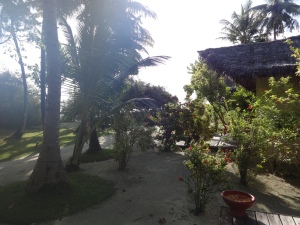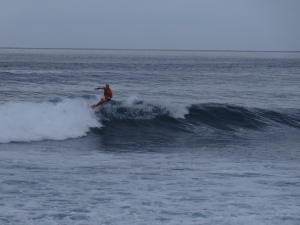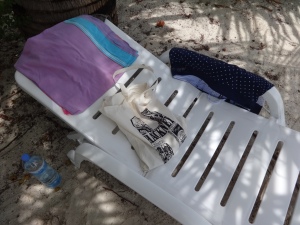 One of the biggest challenges about being a wine supplier in a dry country is that you don’t actually get to drink much wine. Ironic, no? Wines are kept in a special bond at the airport, the mainland capital is alcohol free, and the only opportunities to drink are at the airport hotel (HIH or the ‘local’) or when on a resort. This means that I only really get the chance to try wines in my own portfolio when doing a tasting with clients in resorts, and outside of that I NEVER get to try new wines.
One of the biggest challenges about being a wine supplier in a dry country is that you don’t actually get to drink much wine. Ironic, no? Wines are kept in a special bond at the airport, the mainland capital is alcohol free, and the only opportunities to drink are at the airport hotel (HIH or the ‘local’) or when on a resort. This means that I only really get the chance to try wines in my own portfolio when doing a tasting with clients in resorts, and outside of that I NEVER get to try new wines.
Which is a bit of a worry, and certainly not very conducive to keeping the palate and brain working or expanding my wine knowledge in any way.
So, after a bit of a moan about this with some other expats and suppliers, we decided to form a monthly Wine Club for all Male-based wine suppliers and their plus-ones/people who fancy a night drinking wine.
Logistically this involves: One supplier taking responsibility for the session, selecting 8 wines to try, getting permission from a friendly local resort to hold the session on their island, supplying the wines to the resort in advance, arranging transport to and from the resort for the group on the day itself, and taking cash etc from all parties involved. Not as easy as just getting together for a few drinks in a bar in London eh?
I have to say I was a little bit dubious about getting together with competitors for such an event; while we get on well enough socially, the market here is very small and competitive and it’s often best to steer clear of any work-related conversation. But given it was my idea in the first place and everything was organised to the final detail, I thought it would be a bit churlish not to go!
So we all piled onto a speedboat provided by one of the competitors to a local resort willing to host the night for us. After a quick welcome drink in the bar while waiting for everyone to arrive, we went to our private tasting room and got together in teams of 3 for the tasting.
It had been set up so that we did a ‘guided’ blind tasting of each wine, with the organiser asking 7 questions on each to help us as we went. I have to say I was more than a little rusty when it came to blind tasting, and certainly wished I’d spent a bit of time studying their portfolio earlier to give me a few hints! My team consisted of me, a competitor, and a sommelier from one of our client resorts, so we felt like we were in with a good chance!
 Wine 1: Petaluma Hanlin Hill Riesling, Clare Valley, Australia, 2011
Wine 1: Petaluma Hanlin Hill Riesling, Clare Valley, Australia, 2011
The first question – Old or New World? Well we fell at the first hurdle on this one, primarily because due to the high acidity levels we were convinced this was European. We veered from Sauvignon, to Riesling, to cheap Petit Chablis. Eventually going with a ‘cheap Chilean Sauvignon Blanc’ we also got the next question wrong – nominating South America for the region rather than Australasia. Once we knew it was Australian we were able to hone in a little – single varietal, south Australia, Riesling – the slight oily texture gave this one away. Is this the best example of Ozzie Riesling I’ve ever tasted? Probably not – I found the acidity a little too high to be pleasant and well balanced, and some of the typical stone fruit aromas and flavours outweighed by the citrus. However, definitely drinkable, and a cracking match for some light asian/seafood dishes.
 Wine 2: Cave de Lugny Pouilly-Fuisse’ AC, France, 2009
Wine 2: Cave de Lugny Pouilly-Fuisse’ AC, France, 2009
About as far removed from the first wine as you can get. From the colour and the nose we were stumped. Deep gold, and a fairly flat, oxidised aroma. Still some good acidity, but little fruit. Was it meant to smell and taste like that? Given the supplier had served it we figured yes! An almost sherry finish on the palate had us leaning towards an aged white Rioja, so we went Old World for question 1. It was France. So it had to be an aged Burgundy. Once we got to narrowing down the region we went with Maconnais (correct) as we didn’t feel it was going to be one of the more renowned and expensive regions. Had it seen any oak? Tricky, but without the creaminess you would expect we went no, and were correct. Hard to believe this is a Chardonnay bottled so recently, with no oak. My gut was that this bottle was a little more oxidised than intended, and had perhaps had some storage issues – we guessed this was at least 10 years old. I have to say that for my personal tastes, I’m not a sucker for this style of wine so could be a little unfairly biased against it, but the Sommelier in my team who trained in Burgundy wasn’t a massive fan either and I am happy to defer to his knowledge!
 Wine 3: Cloudy Bay Sauvignon Blanc, Marlborough, New Zealand, 2010
Wine 3: Cloudy Bay Sauvignon Blanc, Marlborough, New Zealand, 2010
I am happy to say we sailed through this one – New World, New Zealand, South Island, Marlborough, Sauvignon Blanc, Cloudy Bay. We just missed out on the vintage as we put 2011 after MUCH discussion. Given this is such a popular wine here in the Maldives it was a bit of a shoe-in. Exactly what you would expect – elderflower and gooseberry aromas along with citrus and stone fruit flavours and good acidity which is slightly on the wane as it ages a little, if anything, making it a little more harmonious. This is a benchmark, crowd-pleaser NZ Sauvignon Blanc for good reason.
 Wine 4: Craggy Range Te Muna Road Single Vineyard Sauvignon Blanc, Martinborough, New Zealand, 2011
Wine 4: Craggy Range Te Muna Road Single Vineyard Sauvignon Blanc, Martinborough, New Zealand, 2011
Our gut/common sense told us that he wouldn’t put two NZ Sauvignons in a row, now would he?! So we were convinced this was a Sancerre. Actually not a terrible shout – compared to the Cloudy Bay this wine has an elegance and minerality more common in the Old World, and a slight bitterness (not unpleasant) that you would sometimes associate with Sancerre due to maceration common in the winemaking process. Restrained and elegant on the nose – still the typical notes of elderflower, gooseberry and citrus, but not punching you in the face as a NZ SB so often does. Crisp, refreshing acidity, a fine, almost chalky mineral texture, and well balanced with a lengthy finish – this was exactly my style of wine and I’m actually not ashamed to have gotten this wrong. A really lovely single vineyard example rather than the ubiquitous floral/tropical efforts so often coming out of New Zealand now. As a Sancerre lover, this is a new find for me, and one I will hopefully be tasting again in the not too distant future. So why not give the Cloudy Bay a miss for once and try this instead?
 Wine 5: Domaine des Nouelles Rose’ d’Anjou AC, France, 2011 (10%)
Wine 5: Domaine des Nouelles Rose’ d’Anjou AC, France, 2011 (10%)
In an attempt to mitigate what was a massive failure in a blind tasting session, I would like to draw your attention to the alcohol content of this rose’ – 10%. This should give you some indication as to the sweetness of this wine and the fact that we would NEVER have pinned it as French. Needless to say, we were convinced it was a California White Zinfandel – nemesis of many dry rose’ lovers worldwide – everything from the colour (deep pink), to the sweetness, to the red fruit flavours, and the flabby texture screamed White Zin. To then be told it was in fact Old World – where do you go from there? Not France or Italy, possibly Germany, I mean they make plenty of off-dry wines but usually not Rose’, so how about Spain? Was this a cheap and cheerful bag-in-box offering from Spain, the kind you would buy by the litre for quaffing on holiday? No, France. So from where? Our options were: Loire, Languedoc-Roussillon, Rhone, Provence. By this point we were even more thrown and went with Languedoc, purely down to the cheap and cheerfuls that are produced. Wrong again. Loire. So it had to be a Rose’ d’Anjou! I must admit I thought the days of this wine was over – a classic in the 80s apparently going through a resurgence! Although not that surprising it is selling well here in this market – with a lot of Russian and Chinese guests here in the Maldives who prefer a sweeter wine, I can imagine this one selling like hot cakes, despite my own personal taste screaming “No, just No!”. Bonus points for the 6 grape varieties permitted to make Rose’ d’Anjou? We got 3.*

Wine 6: Chateau Ste Michelle Columbia Valley Cabernet Sauvignon, Washington State, USA, 2005
I popped to the loo at this point so missed the discussions of my colleagues when initially tasting this wine, pinning it as New World, USA, and probably California, all of which I was happy to go along with. We toyed with the blend for a bit – Cab Sav? Syrah? before the question asking about whether it was single grape varietal or a blend meant we opted for Syrah. Wrong. Why did we think all of the above? First, massively high alcohol on the nose and palate, not as integrated as it could be. This also gave it a spiciness which we mistook for Syrah. Red and black fruit on the palate, but a slightly flabby texture rather than the fine, slightly grippy tannins one would expect. Finally, I would usually associate Washington State with more restrained wines and varietals – Riesling and Pinot Noir – so wouldn’t necessarily have pinpointed the location either. An interesting one; I would say food friendly rather than for lone drinking, and from a pretty reputable winery too (now their Riesling, that’s a wine to try!)

Wine 7: Chateau Tour Pibran, Pauillac AC, France, 2000
Old World? Check. France? Check. (Albeit after some discussion about Italy). Bordeaux? Okaaaaaay. Left Bank? Yes. Pauillac? No. St Julien surely – this didn’t seem to be quite in the heady levels of quality you would expect from Pauillac. As for the blend? My gut said more Merlot than Cab Franc, mainly because of the softer fruit and tannins, although our wine heads said 70-30 Cab Sav- Merlot. Turned out I was right! (Why oh why don’t I go with my gut more often?!). A value for money red from Pauillac, much more approachable than some of the more austere wines you would expect from the region, mainly due to the domination of Merlot in the blend. Certainly a good one to try as a ‘starter’ Bordeaux if you’re not sure what you might like and don’t want to make an expensive mistake!
So it turned out we came second, which wasn’t too bad considering! I have to say doing the blind tasting was a great exercise, and always better to do in groups in order to bounce ideas off one another (read: argue).
We then retired to the restaurant for dinner where we enjoyed a cracking Clare Valley Riesling, Moulin-a-Vent Gamay, and the particularly lovely Forrest Estate Pinot Noir. All in all, a great evening – looking forward to the next one!

*Grolleau, Cabernet Franc, Cabernet Sauvignon, Gamay, Malbec, Pineau d’Aunis


